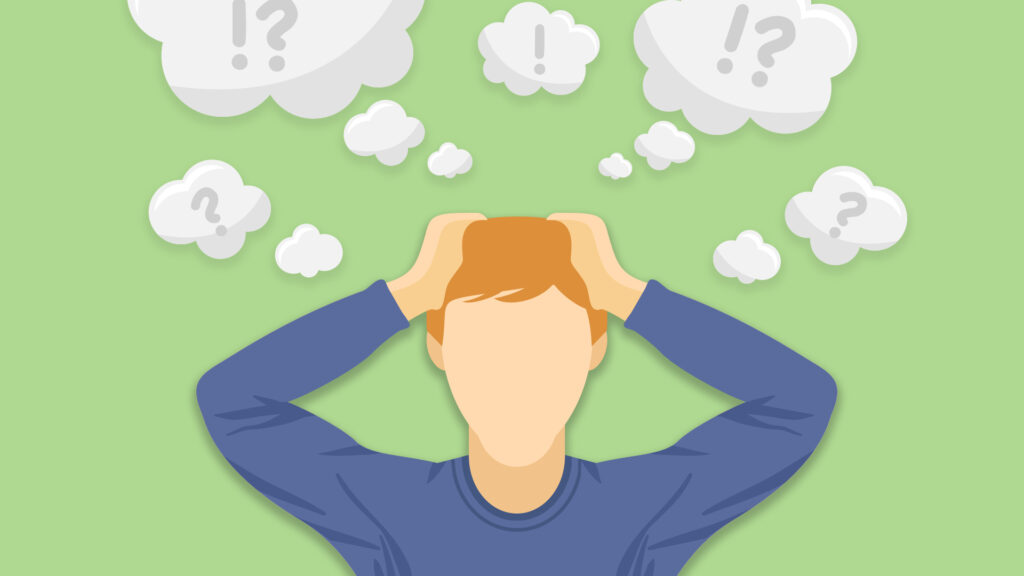Performance anxiety is a common problem among performers, athletes, and other professionals. It can range from uncomfortable feelings of worry to full-blown panic attacks on stage. While there are many methods for coping with performance anxiety, Cognitive Behavioral Therapy (CBT) is one of the most effective tools available. In this blog post, we’ll take a closer look at what CBT is and how it can be applied to managing performance anxiety. We’ll also provide some tips on how you can start using CBT in your own life to improve your performance and reduce stress levels.
Contents
What is Performance Anxiety?

Performance anxiety is a type of anxiety that can occur before or during a performance. It can result in a variety of symptoms, including feeling nervous, sweating, shaking, and having a racing heart. Performance anxiety can affect anyone, but it is especially common in people who are new to performing or who have had previous negative experiences.
The origin of performance anxiety can often be traced back to a fear of failure or fear of being judged by others. This type of fear is a normal emotional reaction, but it can become problematic when it starts to affect your ability to perform at the level you want to.
Some of the most common causes of performance anxiety are:
- Negative self-talk
- Lack of confidence in your abilities
- Fear of criticism from others
- Perfectionist tendencies
Treating Performance Anxiety with CBT
CBT (cognitive-behavioral therapy) is an evidence-based approach to treating mental health conditions, including performance anxiety. It focuses on how thoughts and behaviors interact with one another and can help you develop a more positive mindset for dealing with stressful situations.
At its core, CBT helps individuals explore and modify their thoughts, which can in turn help to reduce performance anxiety. When trying to understand the underlying causes of performance anxiety, CBT encourages individuals to identify and challenge any unhelpful beliefs or worries they may have about performing.
This process helps people recognize how their thoughts are affecting their feelings and behaviors, and ultimately allows them to develop healthier thought patterns and behaviors. In turn, this can help to reduce feelings of anxiety and stress which in turn improves their performance.
How Does CBT Help with Performance Anxiety?

CBT is an evidence-based approach to treating performance anxiety. It focuses on the relationship between thoughts, feelings, and behavior. Through CBT, individuals learn skills to better manage their anxiety by challenging negative thinking patterns and developing healthier responses to anxious situations.
Also, CBT helps individuals identify the thought patterns that trigger their performance anxiety and replace them with more adaptive beliefs. By recognizing how thoughts influence feelings and behavior, individuals can develop new coping skills to reduce their anxiety in challenging situations.
CBT also addresses the underlying cause of anxiety related to performance. For example, a person may have low self-esteem or a fear of failure that is making them overly anxious in performance situations. Through CBT, individuals can learn to identify and address these issues so they can better manage their anxiety.
Techniques of CBT For Performance Anxiety

The techniques for CBT for performance anxiety can vary, but generally involve the following:
Cogntive Restructuring
This technique focuses on changing the way an individual thinks and views performance anxiety. It helps people to identify any negative or irrational thoughts they have about their performance and replace them with more realistic and positive ones.
This technique also encourages people to look at situations that cause performance anxiety in different and more positive ways, often resulting in a decrease in symptoms.
Exposure Therapy
This technique involves gradually exposing the person to their feared situation and learning relaxation techniques to manage their anxiety. By doing this, people can learn how to cope with the fear associated with performing, and eventually, the fear dissipates.
The exposure can be done in several ways, either through imagery or through actually performing in front of people.
Behavioral Activation
This technique focuses on developing new behaviors and activities that can help to reduce performance anxiety. It involves learning how to change behaviors related to anxiety-producing situations so that the individual can feel more confident and in control.
Examples of this technique include practicing relaxation methods before a performance, establishing a regular practice routine, or developing positive self-talk statements to combat negative thoughts.
Progressive Muscle Relaxation
One of the most popular and effective CBT techniques for performance anxiety is progressive muscle relaxation (PMR). This technique involves tensing and releasing different muscle groups to help relax the body and reduce stress.
During PMR, you will be instructed to focus on the sensations in your body while you tense and then release a specific muscle group. With practice, you will be able to recognize the tension in your body when it starts to increase and use PMR to help relax those tense muscles.
In addition, PMR can be used to help identify any specific areas of tension that may be interfering with your performance. Once these areas are identified, you can work on releasing them so that they no longer interfere with your performance.
Finally, PMR can also help you become aware of any thought patterns or emotions that may be contributing to your performance anxiety. Once these are identified, it is possible to make changes to reduce the intensity of the anxious feelings and improve overall performance.
Journaling
Another way to manage performance anxiety through cognitive behavioral therapy (CBT) is journaling. Writing down one’s thoughts and feelings is a powerful tool for managing stress and improving self-regulation.
By taking the time to reflect on your thoughts and emotions, you can better understand what triggers your performance anxiety and learn to cope with it in healthier ways. When writing in your journal, it can be helpful to focus on exploring the root cause of your anxiety.
Ask yourself what thoughts or beliefs are causing you to feel anxious and how they may be impacting your performance. Additionally, reflect on any unhelpful behaviors that have been perpetuating this cycle of anxiety and determine healthier ways to respond instead.
How Long Does Treatment Usually Last?

The duration of treatment depends on the individual and the severity of their performance anxiety. However, most people see a significant improvement after just a few sessions of CBT.
For some people, CBT may be a short-term treatment to help them cope with a specific performance. For others, it may be a longer-term treatment to help them manage their anxiety on an ongoing basis.
The duration of CBT treatment may also vary depending on the type of performance. For instance, someone who experiences anxiety before giving a presentation may need fewer sessions than someone who feels anxious when performing onstage for an audience.
Approximately 8-12 sessions of CBT may be recommended for mild to moderate performance anxiety, and more intensive treatment is often needed for severe cases. During treatment, your therapist will work with you to tailor the approach to your specific needs.
Are There Any Side Effects of CBT for Performance Anxiety?
While CBT is generally considered to be a safe and effective treatment option, some potential side effects should be taken into consideration.
The most common side effect of CBT is temporary discomfort. As with any type of psychotherapy, the process of delving into personal issues and emotions can be challenging and sometimes overwhelming.
It is not uncommon for people to feel worse before they start feeling better after beginning CBT. However, these negative feelings are typically only temporary and will dissipate as therapy progresses.
Other potential side effects of CBT for performance anxiety include:
- Fatigue: Some people may experience fatigue or exhaustion due to the mental effort required to participate in therapy.
- Headaches: Some people may also experience headaches during or after CBT sessions. These are usually tension headaches that can be alleviated with over-the-counter medications.
- Anxiety: In some cases, CBT can increase anxiety levels in the short term as individuals begin to confront their fears and anxieties head-on. However, this increase in anxiety is usually only temporary and will eventually give way to lower levels of anxiety overall.
- Constant conversations with a therapist can also be emotionally draining and may lead to feelings of emotional exhaustion. It is important to remember that these feelings are often temporary and will eventually subside.
Conclusion
Cognitive-behavioral therapy is an effective tool for managing performance anxiety. CBT helps you to identify, challenge and change the negative thoughts that can fuel anxiety and prevent you from achieving your goals. With practice and dedication, it’s possible to reduce or even eliminate performance anxiety with CBT techniques. If you’re looking for a way to manage your performance anxiety and start living more confidently in all areas of your life, give cognitive-behavioral therapy a try.
For more information, please contact MantraCare. Anxiety is a common mental health condition characterized by persistent feelings of worry, fear, and apprehension. If you have any queries regarding Online Anxiety Counseling experienced therapists at MantraCare can help: Book a trial Anxiety therapy session


